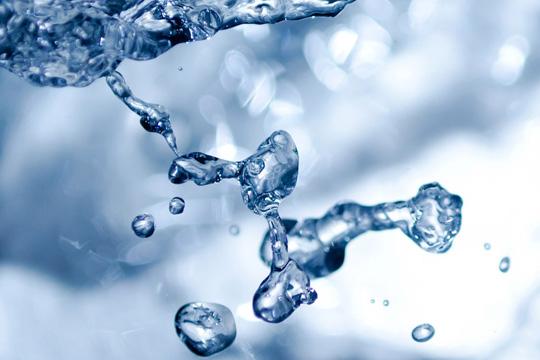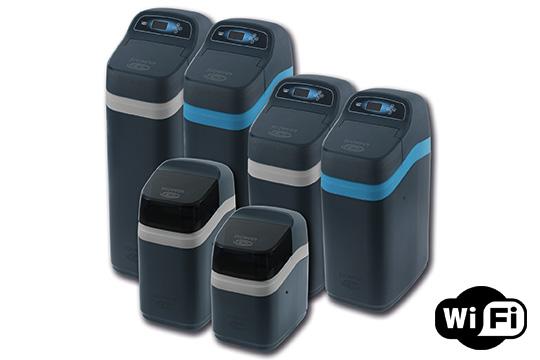This is a brief water softener guide. If you have any questions, you can reach us via our contact page.

This is a brief water softener guide. If you have any questions, you can reach us via our contact page.

An ion exchange, salt based, water softener tackles the problem of lime-scale by eliminating harmful minerals from the water before it has chance to reach the taps. A water softener is connected to the home’s plumbing system, normally close to the incoming mains to ensure all parts of the home benefit from softened water.
An ion exchange water softener extracts the calcium and magnesium ions (lime-scale) found in hard water for harmless sodium ions.
The softening process adds a very small amount of extra sodium to the water supply, which in most cases is safe to drink. See Drinking Softened Water.
All ion-exchange water softeners work on the same exchange principle. However, not all water softeners are the same. Research and development has greatly improved systems over the years, with manufacturers improving upon:
Modern water softeners comprise a tank of resin beads, a brine tank (where the salt is stored), and a controller for the operation of the softener.
A timed controller regenerates at timed intervals (e.g. every 1 or 2 days). Timed control is wasteful because the softener may regenerate before the resin has been exhausted or if the resin is exhausted before the regeneration is due hard water will only be available.
Volume controlled or metered water softeners, measure the amount of water flowing through the softener and regenerate the resin beads when they detect that they are exhausted.
For a meter controlled water softener to calculate when the resin has been exhausted it needs to know the hardness of the water and the amount of water that has been used. Therefore, a water softener set to the exact hardness of the water is going to be more efficient than a softener that uses a pre-set hardness range.
Electric softeners are the most widely-used type of system. Electronic softeners – technology is used to record the water usage and control the regeneration process. Non-electric water softeners rely on water pressure to measure the water use and operate the valves.

The main differences between the two types of softeners are:
The twin tank softener has two low softening capacity tanks, which makes them compact in design, but increases their complexity. Twin tanks are mechanical and offer no performance information.
When a single tank softener regenerates only hard water is available. On the other hand, twin tank water softeners have two resin tanks and one will go offline when it needs to regenerate, so that soft water is supplied 24/7.
We don’t use water in our homes 24/7, but we do need the reassurance that softened water will be available on demand. Therefore you need to ensure the water softener offers soft water on demand. This means the single tank softener will regenerate when water is not being used (normally the early hours of the morning), and it’s technology will ensure there is always plenty of softening capacity during the day for your needs, therefore soft water always available, but without the complexity of a twin tank softener.
The twin tank low softening capacity means the softener will be working harder and regenerating frequently. A twin tank softener for a family can be expensive to run and their frequent regenerations can disturb water flow and increase wear and tear.
Tablet/granular salt is available in 25kg or 10kg bags and readily available from various outlets. Block salt is available in 8kg bags is limited in availability and more expensive.
Before selecting your water softener, always ask:
A well-designed water softener can last well over 10 years. In fact, it’s quite common to find people with good quality water softeners over 20 years old.

Water softeners range from hundreds of dollars to over a thousand dollars. Like choosing a car, all systems promise to get you from A to B but some are capable of doing this more reliably and efficiently than others, with innovative technology and attentive after-sales service.
Softening capacity and the type of salt used by the softener determines running costs.
The on-going cost involved is the salt and water used in the regeneration process. Comparison tables of salt and water usage are meaningless without knowing the softening capacity.
Different water softeners will use different amounts and types of salt for regeneration.
Tablet and granular salt is available from various outlets, whilst block salt has fewer suppliers and is generally twice as expensive.
Many people will think about the physical size of the water softener, but it is the water softening capacity of the water softener (the amount of soft water created between regenerations) that really determines its suitability for the home.
A small sized water softener in a home that needs high flow rates will not provide the correct contact time for the ion exchange to work effectively and the home will not have properly softened water.
The volume of soft water that can be created is dependent on the volume of resin inside the softener and the hardness of the water in your area. Trustworthy manufacturers will show how much soft water can be created by their water softener, normally based on an average of 300 ppm water hardness.
Your water usage (a guide is 160 litres per person per day) plus the size of your home will determine which softener is best for you. A water softener with low softening capacity would be suitable for 2-3 people, but a low softening capacity in a home of 4 or more people will be expensive to run and because it will be working harder increase its wear and tear and longevity.
Another concern of householders is whether their water softener will have a detrimental effect on the home’s water flow. High flow rates are often not required in most homes. Larger properties with direct feed systems, high flow rates become a consideration.
If your plumbing is a gravity-fed system, ie: water is drawn from a tank, a good quality water softener will have no effect on your home’s water flow, as the pressure is related to the height of your stored water tank (head of pressure).
However, mega-flow and combi-boilers are direct feed systems which require higher flow rates, as they depend on the pressure of your incoming mains water. These higher flow rates are normally obtained by larger pipework in your home. If in doubt, ask the water softener manufacturer if the water softener is suitable for a direct-feed system.
Larger homes with plumbing above 22mm will require a softener specifically designed for larger pipework. A standard water softener offered with larger hoses will not create the water flow required in a larger house and the ion exchange process can be compromised because there is not enough contact time with the resin beads.
Are you interested in the products discussed here? Get in touch with us today!
Where can I install my water softener?
Most water softeners are fitted where the mains water enters the home. However, all plumbing is different and an expert advisor can recommend where best to install the water softener, whether that’s the kitchen, utility room, basement, garage or even outside!
Does a water softener require servicing?
Any responsible manufacturer will offer after sales service. This is why buying from a water treatment expert will help to protect your investment in the long run.